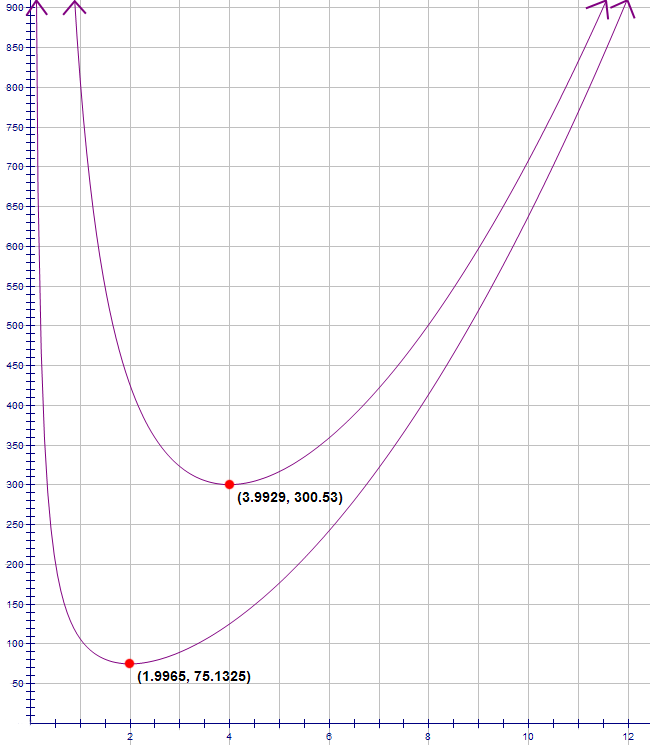



Best Radius to Height Ratio
1:2
when the surface area was at its minimum. As it turns out, this remains the case for cylinders of other volumes. The easiest way to show this is through several other examples to show this constant trend. In addition to the cylinder used in part 1, cylinders of volumes50, 400, and 713,658 cm3
were put to the test. The equations for their surface area are as follows: ,
,  , and
, and  .
.In the same manner, these are then graphed to find the optimal point where surface area is the least.


In the first example, the radius comes to
1.9965 cm
, the height is calculated to be3.9928 cm
, and the surface area is75.1325 cm2
.In the next one, the radius is
3.9929 cm
, the height is7.9861 cm
, and the surface area is300.53 cm2
.The trend even holds true if you needed to design an optimal cylinder for a large-scale industrial task, such as housing nuclear waste. This massive cylinder would have a radius of
48.4288 cm
, a height of96.8574 cm
, and a surface area of44,208.723 cm2
.The three ratios are:
 ,
,  , and
, and  .
.In every case, it is clear that the ratio of the radius to the height is about 1:2. In fact, it would be exact if not for prior rounding.